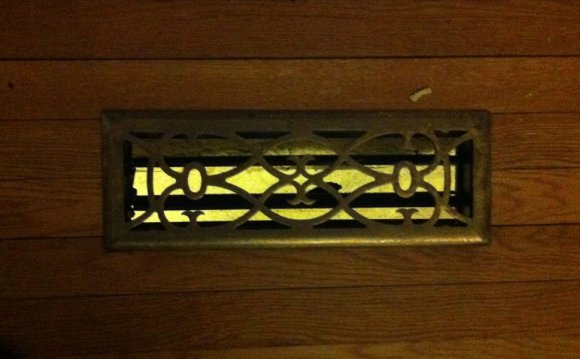
Sealing off the outside air and earth completely from a crawl space, negates the need to heat, cool, or dehumidify it. If you don't live in your crawl space, then why heat or cool it?
Fixing a crawl space properly makes a world of difference in a crawl space and home. But it's not a perfect world, and you may have some unwanted air flow between spaces. If you want to semi-condition your crawl space, there is one factor that used to be a problem, but is now as asset duct leakage.
We said that the average crawl space with ducts has hundreds of cubic feet per minute of duct leakage. Both heating and air conditioning dry the air, and when this air leaks out of your ducts by "accident", it will keep the space beneath your feet dry.
After you fix your crawl space, when your heat ducts leak, the warm air you paid for is still in the building, rising to warm the floors above. When your return ducts leak, the air they suck in isn't full of moisture and mold spores and rotting wood smells. It only serves to exchange the air in your crawl space. Duct leakage is another way to get combustion air down to your crawl space, just as the building code relies on "normal air infiltration" now.
In fact, building scientists are now developing strategies where a small supply vent is cut into the duct to get conditioned air into your crawl space, to provide drying and air exchange. In the unlikely event that your ducts are sealed at every joint, this may be something to consider.
Be sure that return duct leakage doesn't dominate. If a return duct has a big leak, it's best to seal the leak so the duct system doesn't depressurize the crawl space. This would cause the crawl space to suck bad outdoor air in faster through tiny unsealed air paths to the outside, and could cause backdrafting of any combustion appliances located in the crawl space by drawing make-up air down the chimney into the crawl space.
It's a myth that a crawl space should be vented to remove "stale" air. What is "stale" air? Air does not go bad if it's not moving. Venting "stale" air really means that the air has something in it we don't want (like moisture) and we want to get it out. It's not the air that's the problem; it's what the air contains.
There are other possibilities for conditioning your crawl space. For example, a fan blowing 30-40 cubic feet per minute of air from upstairs (conditioned space) into the crawl space provides air exchange and drying, while pressurizing the crawl space. To get the air back upstairs, install several transfer grilles in the floor. This is a good approach if the crawl space is clean, but if it's moldy, you'll need a different approach.
There is way to both condition the crawl space and ventilate the entire house in line with the new ASHRAE 62.2 ventilation standard. That is to install a fan to continuously exhaust air out of the crawl space to the outside and install two or more transfer grilles in the floor so new conditioned air can enter the crawl space from up stairs.
The new ventilation standard says to add fresh air to the building envelope at the rate of .01 cfm per square foot of the house and 7.5 cfm per occupant. The number of occupants is defined as the number of bedrooms plus one. Therefore a 2000 square-foot home (2000 x .01 = 20 cfm) with three bedrooms (3 + 1 x 7.5 = 30 cfm) will need a 50 cfm fan.
Instead of adding an exhaust fan upstairs, you can do it through the crawl space and get two things done at once conditioning your crawl space and ventilating your house properly.
If the floor framing system is moldy, the mold will go dormant and stop producing spores once the relative humidity goes down. If the mold is still bothering the occupants of the home, consider separating the crawl space from the upstairs space as much as possible, or consider remediation of the mold.









